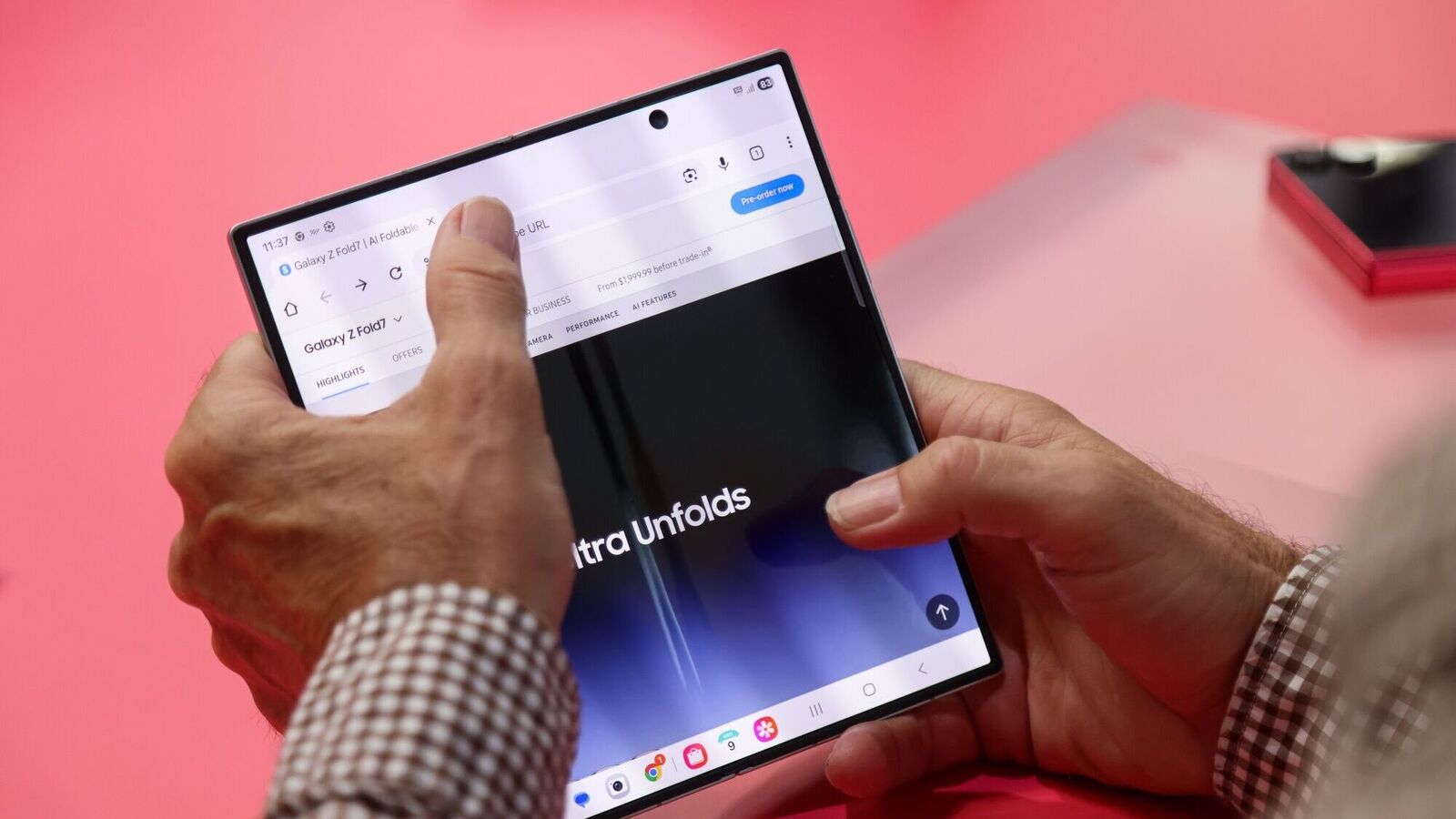Samsung was one of the early adopters of foldable technology when it rolled out the first-ever Z Fold in early 2019. Almost seven years since then, the Korean smartphone maker introduced its Z Fold 7 last month with the promise of being the thinnest, lightest, and most advanced foldable smartphone yet.
One of the biggest fears about adopting a foldable device is the durability of the hinge. Samsung officially states that the Z Fold 7 has been tested for folding and unfolding 5,00,000 times — more than double the 2,00,000 folds it promised with the Z Fold 6. To put it in perspective, if the figure does hold up, it should last about 10 years when folding the phone 100 times a day, and over 6 years when folding it 200 times a day.
But have you ever wondered if that claim actually holds up — and if the phone incurs any other damage during the claimed fold cycle? Well, you’re certainly not alone. One Korean YouTuber from the channel Tech It came very close to testing Samsung’s claims by folding and unfolding the Z Fold 7 manually 2,00,000 times over the course of five days.
How did the Z Fold 7 hold up during the real-life test?
The YouTuber found that a “reboot error” appeared during the first 6,000 to 10,000 folds — and this error kept recurring after roughly every 10,000 folds.
Around the 46,000-fold mark, the Z Fold 7’s hinge started making some creaking noises, though the phone still worked as intended. Shockingly, during the 75,000-fold mark, the Samsung device began leaking an unidentifiable “black liquid” from the hinge, which later disappeared. The liquid reappeared around the 1,05,000-fold mark, by which time the crease on the Z Fold 7 had also deepened.
A more concerning issue surfaced around the 1,75,000-fold mark when the Z Fold 7’s speakers — including the top, bottom, and earpiece — stopped working. The YouTuber also noted that the hinge had become noticeably smoother and the elasticity of the folding mechanism was lost.
Despite these hiccups, the Z Fold 7 actually reached the 2,00,000-fold milestone. The inner display showed no dead pixels, touch response remained accurate, though the crease had become much more pronounced.

